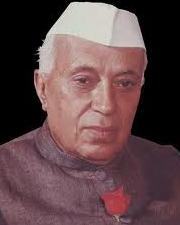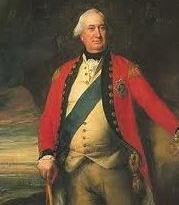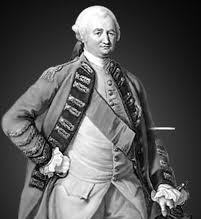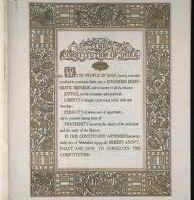The property of metals by which they can be beaten into thin sheets is called malleability.
The property of metal by which it can be drawn into wires is called ductility.
Since metals produce ringing sounds, they are said to be sonorous. The materials other than metals are not sonorous.
NCERT Standard 8 : Materials Metals and Nonmetals Class 8 Notes
18 Apr 2015
By
Admin
Related Posts with thumbnails for bloggerblogger widgets
Continue reading..
NCERT Standard 8 : Microorganisms Friend and Foe Class 8 Notes
By
Admin
Microorganisms are classified into four major groups. These groups are bacteria, fungi, protozoa and some algae. Virus reproduce only inside the cells of the host organism, which may be a bacterium, plant or animal. Common ailments like cold, influenza (flu) and most coughs are caused by viruses. Serious diseases like polio and chicken pox are also caused by viruses. Diseases like dysentery and malaria are caused by protozoans whereas typhoid and tuberculosis (TB) are bacterial diseases.
Related Posts with thumbnails for bloggerblogger widgets
Continue reading..
NCERT Standard 8 - Crop Production and Management Class 8
11 Apr 2015
By
Admin
1. Which among the following is a Kharif Crop?
(a) Wheat
(b) Gram
(c) Mustard
(d) Rice
Rice is the right answer.
The crops which are sown in the rainy season are called kharif crops. The rainy season in India is generally from June to September. Paddy, maize, soyabean, groundnut, cotton, etc., are kharif crops.
The crops grown in the winter season are called rabi crops. Their time period is generally from October to March. Examples of rabi crops are wheat, gram (parippu), pea, mustard and linseed.
The crops which are sown in the rainy season are called kharif crops. The rainy season in India is generally from June to September. Paddy, maize, soyabean, groundnut, cotton, etc., are kharif crops.
The crops grown in the winter season are called rabi crops. Their time period is generally from October to March. Examples of rabi crops are wheat, gram (parippu), pea, mustard and linseed.
Related Posts with thumbnails for bloggerblogger widgets
Continue reading..
Land and Water Resources | NCERT Standard 8 | Social Science
3 Mar 2012
By
Admin
Land : Land is among the most important natural resources. It covers only about thirty per cent of the total area of the earth’s surface and all parts of this small percentage are not habitable. The uneven distribution of population in different parts of the world is mainly due to varied characteristics of land and climate. Ninety per cent of the world population occupies only thirty per cent of land area. The remaining seventy per cent of the land is either sparsely populated or uninhabited.
Related Posts with thumbnails for bloggerblogger widgets
Continue reading..
Mineral and Power Resources | NCERT Standard 8 | Social Science
By
Admin
Minerals : Rocks on earth have several materials called minerals mixed in them. These minerals are scattered throughout the earth’s rocky crust. A naturally occurring substance that has a definite chemical composition is a mineral. Minerals are not evenly distributed over space. They are concentrated in a particular area or rock formations. Minerals are formed in different types of geological environments, under varying conditions. They are created by natural processes without any human interference. They can be identified on the basis of their physical properties such as colour, density, hardness and chemical property such as solubility. The salt in our food and graphite in your pencil are also minerals.
Related Posts with thumbnails for bloggerblogger widgets
Continue reading..
NCERT Notes for Class 8 | Agriculture
6 Dec 2011
By
Admin
Three types of economic activities : These are primary, secondary and tertiary activities. Primary activities include all those connected with extraction and production of natural resources. Agriculture, fishing and gathering are good examples. Secondary activities are concerned with the processing of these resources. Manufacturing of steel, baking of bread and weaving of cloth are examples of this activity. Tertiary activities provide support to the primary and secondary sectors through services. Transport, trade, banking, insurance and advertising are examples of tertiary activities.
Related Posts with thumbnails for bloggerblogger widgets
Continue reading..
India After Independence
26 Nov 2011
By
Admin
 When India became independent in August 1947, it faced a series of very great challenges. As a result of Partition, 8 million refugees had come into the country from what was now Pakistan. These people had to be found homes and jobs. Then there was the problem of the princely states, almost 500 of them, each ruled by a maharaja or a nawab, each of whom had to be persuaded to join the new nation. The problems of the refugees and of the princely states had to be addressed immediately. In the longer term, the new nation had to adopt a political system that would best serve the hopes and expectations of its population.
When India became independent in August 1947, it faced a series of very great challenges. As a result of Partition, 8 million refugees had come into the country from what was now Pakistan. These people had to be found homes and jobs. Then there was the problem of the princely states, almost 500 of them, each ruled by a maharaja or a nawab, each of whom had to be persuaded to join the new nation. The problems of the refugees and of the princely states had to be addressed immediately. In the longer term, the new nation had to adopt a political system that would best serve the hopes and expectations of its population.
India’s population in 1947 was large, almost 345 million. It was also divided. The citizens of this vast land spoke many different languages, wore many different kinds of dress, ate different kinds of food, practised different professions and belonged to different religion and castes. To the problem of unity was added the problem of development. At Independence, the vast majority of Indians lived in the villages. Farmers and peasants depended on the monsoon for their survival. So did the non-farm sector of the rural economy, for if the crops failed, barbers, carpenters, weavers and other service groups would not get paid for their services either. In the cities, factory workers lived in crowded slums with little access to education or health care. Clearly, the new nation had to lift its masses out of poverty by increasing the productivity of agriculture and by promoting new, job-creating industries.
Related Posts with thumbnails for bloggerblogger widgets
Continue reading..
NCERT Standard 8 : Indian Freedom Struggle: 1870s-1947
23 Nov 2011
By
Admin
The various associations in late nineteen century like Poona Sarvajanik Sabha, the Indian Association, the Madras Mahajan Sabha, the Bombay Presidency Association and Indian National Congress worked with the idea that the people should be sovereign – a modern consciousness and a key feature of nationalism. In other words, they believed that the Indian people should be empowered to take decisions regarding their affairs. The dissatisfaction with British rule intensified in the 1870s and 1880s. The Arms Act was passed in 1878, disallowing Indians from possessing arms. In the same year the Vernacular Press Act was also enacted in an effort to silence those who were critical of the government. The Act allowed the government to confiscate the assets of newspapers including their printing presses if the newspapers published anything that was found “objectionable”. In 1883, there was a furore over the attempt by the government to introduce the Ilbert Bill. The bill provided for the trial of British or European persons by Indians, and sought equality between British and Indian judges in the country. But when white opposition forced the government to withdraw the bill, Indians were enraged. The event highlighted the racial attitudes of the British in India.
Related Posts with thumbnails for bloggerblogger widgets
Continue reading..
Awadh in Revolt of 1857 | Summary Settlement of 1856
20 Nov 2011
By
Admin
In 1851 Governor General Lord Dalhousie described the kingdom of Awadh as “a cherry that will drop into our mouth one day”. Five years later, in 1856, the kingdom was formally annexed to the British Empire. The conquest happened in stages. The Subsidiary Alliance had been imposed on Awadh in 1801. By the terms of this alliance the Nawab had to disband his military force, allow the British to position their troops within the kingdom, and act in accordance with the advice of the British Resident who was now to be attached to the court. Deprived of his armed forces, the Nawab became increasingly dependent on the British to maintain law and order within the kingdom.
Related Posts with thumbnails for bloggerblogger widgets
Continue reading..
East India Company and Revolt of 1857
18 Nov 2011
By
Admin
 The policies of the East India Company had adverse effect on all sections of Indian people. Since the mid-eighteenth century, nawabs and rajas had seen their power erode. They had gradually lost their authority and honour. The freedom of the rulers reduced, their armed forces disbanded, and their revenues and territories taken away by stages. Many ruling families tried to negotiate with the Company to protect their interests. For example, Rani Lakshmibai of Jhansi wanted the Company to recognise her adopted son as the heir to the kingdom after the death of her husband. Nana Saheb, the adopted son of Peshwa Baji Rao II, pleaded that he be given his father’s pension when the latter died. However, the Company, confident of its superiority and military powers, turned down these pleas. Awadh was one of the last territories to be annexed. In 1801, a subsidiary alliance was imposed on Awadh, and in 1856 it was taken over. Governor-General Dalhousie declared that the territory was being misgoverned and British rule was needed to ensure proper administration.
The policies of the East India Company had adverse effect on all sections of Indian people. Since the mid-eighteenth century, nawabs and rajas had seen their power erode. They had gradually lost their authority and honour. The freedom of the rulers reduced, their armed forces disbanded, and their revenues and territories taken away by stages. Many ruling families tried to negotiate with the Company to protect their interests. For example, Rani Lakshmibai of Jhansi wanted the Company to recognise her adopted son as the heir to the kingdom after the death of her husband. Nana Saheb, the adopted son of Peshwa Baji Rao II, pleaded that he be given his father’s pension when the latter died. However, the Company, confident of its superiority and military powers, turned down these pleas. Awadh was one of the last territories to be annexed. In 1801, a subsidiary alliance was imposed on Awadh, and in 1856 it was taken over. Governor-General Dalhousie declared that the territory was being misgoverned and British rule was needed to ensure proper administration.
Related Posts with thumbnails for bloggerblogger widgets
Continue reading..
Industries- Different Types Based on Size,Ownership and Technology
17 Nov 2011
By
Admin
Industry refers to an economic activity that is concerned with production of goods, extraction of minerals or the provision of services. Industries can be classified on the basis of raw materials, size and ownership. Industries may be agro based, mineral based, marine based and forest based depending on the type of raw materials they use.
Agro based industries : These type of industries use plant and animal based products as their raw materials. Food processing, vegetable oil, cotton textile, dairy products and leather industries are examples of agro-based industries.
Mineral based industries : These are primary industries that use mineral ores as their raw materials. The products of these industries feed other industries. Iron made from iron ore is the product of mineral based industry. This is used as raw material for
the manufacture of a number of other products, such as heavy machinery, building materials and railway coaches.
Related Posts with thumbnails for bloggerblogger widgets
Continue reading..
British East India Company Rule in India | Revenue Generation Methods
By
Admin
 The Company had become the Diwan of Bengal in 1765, but it still saw itself primarily as a trader. It wanted a large revenue income but was unwilling to set up any regular system of assessment and collection. The effort was to increase the revenue as much as it could and buy fine cotton and silk cloth as cheaply as possible. Within five years the value of goods bought by the Company in Bengal doubled. Before 1865, the Company had purchased goods in India by importing gold and silver from Britain. Now the revenue collected in Bengal could finance the purchase of goods for export. Soon it was clear that the Bengal economy was facing a deep crisis. Artisans were deserting villages since they were being forced to sell their goods to the Company at low prices. Peasants were unable to pay the dues that were being demanded from them. Artisanal production was in decline, and agricultural cultivation showed signs of collapse. Then in 1770 a terrible famine killed ten million people in Bengal. About one-third of the population was wiped out.
The Company had become the Diwan of Bengal in 1765, but it still saw itself primarily as a trader. It wanted a large revenue income but was unwilling to set up any regular system of assessment and collection. The effort was to increase the revenue as much as it could and buy fine cotton and silk cloth as cheaply as possible. Within five years the value of goods bought by the Company in Bengal doubled. Before 1865, the Company had purchased goods in India by importing gold and silver from Britain. Now the revenue collected in Bengal could finance the purchase of goods for export. Soon it was clear that the Bengal economy was facing a deep crisis. Artisans were deserting villages since they were being forced to sell their goods to the Company at low prices. Peasants were unable to pay the dues that were being demanded from them. Artisanal production was in decline, and agricultural cultivation showed signs of collapse. Then in 1770 a terrible famine killed ten million people in Bengal. About one-third of the population was wiped out.
Related Posts with thumbnails for bloggerblogger widgets
Continue reading..
British East India Company Rule in India
15 Nov 2011
By
Admin
 In 1600, the East India Company acquired a charter from Queen Elizabeth I, granting it the sole right to trade with the East. The royal charter, however, could not prevent other European powers from entering the Eastern markets. By the time the first English ships sailed down the west coast of Africa, round the Cape of Good Hope, and crossed the Indian Ocean, the Portuguese had already established their presence in the western coast of India, and had their base in Goa. In fact, it was Vasco da Gama, a Portuguese explorer, who had discovered this sea route to India in 1498. By the early seventeenth century, the Dutch too were exploring the possibilities of trade in the Indian Ocean. Soon the French traders arrived on the scene. The problem was that all the companies were interested in buying the same things. The fine qualities of cotton and silk produced in India had a big market in Europe. Pepper, cloves, cardamom and cinnamon too were in great demand. Competition amongst the European companies inevitably pushed up the prices at which these goods could be purchased, and this reduced the profits that could be earned. The only way the trading companies could flourish was by eliminating rival competitors. The urge to secure markets therefore led to fierce battles between the trading companies.
In 1600, the East India Company acquired a charter from Queen Elizabeth I, granting it the sole right to trade with the East. The royal charter, however, could not prevent other European powers from entering the Eastern markets. By the time the first English ships sailed down the west coast of Africa, round the Cape of Good Hope, and crossed the Indian Ocean, the Portuguese had already established their presence in the western coast of India, and had their base in Goa. In fact, it was Vasco da Gama, a Portuguese explorer, who had discovered this sea route to India in 1498. By the early seventeenth century, the Dutch too were exploring the possibilities of trade in the Indian Ocean. Soon the French traders arrived on the scene. The problem was that all the companies were interested in buying the same things. The fine qualities of cotton and silk produced in India had a big market in Europe. Pepper, cloves, cardamom and cinnamon too were in great demand. Competition amongst the European companies inevitably pushed up the prices at which these goods could be purchased, and this reduced the profits that could be earned. The only way the trading companies could flourish was by eliminating rival competitors. The urge to secure markets therefore led to fierce battles between the trading companies.
Related Posts with thumbnails for bloggerblogger widgets
Continue reading..
Human Resource Basics | Population Pyramid of India - 2010
11 Nov 2011
By
Admin
Human resource is the ultimate resource. Healthy, educated and motivated people develop resources as per their requirements.Human resources like other resources are not equally distributed over the world. They differ in their educational levels, age and sex. Their numbers and characteristics also keep changing. The Government of India has a Ministry of Human Resource Development.The Ministry was created in 1985 with an aim to improve people’s skills. This just shows how important people are as a resource for the country. It is a realized fact that managing the human resource, to make it productive is one of the most challenging tasks in front of all countries in the world.
Related Posts with thumbnails for bloggerblogger widgets
Continue reading..
Basics of Indian Constitution | Introduction to Constitution of India
By
Admin
 In 1934, the Indian National Congress made the demand for a Constituent Assembly. During the Second World War, this assertion for an independent Constituent Assembly formed only of Indians gained momentum and this was convened in December 1946. Between December 1946 and November 1949, the Constituent Assembly drafted a constitution for independent India. Free to shape their destiny at last, after 150 years of British rule, the members of the Constituent Assembly approached this task with the great idealism that the freedom struggle had helped produce. The result was the longest written constitution of any sovereign country in the world, which is safeguarding the democratic nature of our country for the last 65 years.
In 1934, the Indian National Congress made the demand for a Constituent Assembly. During the Second World War, this assertion for an independent Constituent Assembly formed only of Indians gained momentum and this was convened in December 1946. Between December 1946 and November 1949, the Constituent Assembly drafted a constitution for independent India. Free to shape their destiny at last, after 150 years of British rule, the members of the Constituent Assembly approached this task with the great idealism that the freedom struggle had helped produce. The result was the longest written constitution of any sovereign country in the world, which is safeguarding the democratic nature of our country for the last 65 years.
Related Posts with thumbnails for bloggerblogger widgets
Continue reading..
NCERT Notes for Class 8 | NCERT Quiz | NCERT Standard 8 - Social Science
8 Nov 2011
By
Admin
Chapter 1 :
Resources
Resources : Anything that can be used to satisfy a need is a resource. Resources are generally classified into natural, human made and human.
Natural Resources : Natural Resources are drawn from Nature and used without much modification. The air we breathe, the water in our rivers and lakes, the soils, minerals are all natural resources. Many of these resources are free gifts of nature and can be used directly.On the basis of their development and use resources can be classified into two groups, actual resources and potential resources.
Actual Resources : Actual resources are those resources whose quantity is known. These resources are being used in the present. The rich deposits of coal in Ruhr region of Germany and petroleum in the West Asia, the dark soils of the Deccan plateau in Maharashtra are all actual resources.
Related Posts with thumbnails for bloggerblogger widgets
Continue reading..
NCERT Notes for Class 8 | NCERT Quiz | NCERT Standard 8 - Science
By
Admin
Chapter 16 : Water
World Water Day : 22 March is celebrated as the world water day.The General Assembly of the United Nations proclaimed the period 2005 – 2015 as the International Decade for action on “Water for life”. All efforts made during this decade aim to reduce by half the number of people who do not have access to safe drinking water.
The amount of water recommended by the United Nations for drinking, washing, cooking and maintaining proper hygiene is a minimum of 50 litres per person per day. This amount is about two and a half bucket of water.
Water Cycle : When water circulates through the water cycle it can be found in all the three forms, i.e., solid, liquid and gas —at any given time somewhere on the earth. The solid form, snow and ice, is present as ice caps at the poles of the earth, snow-covered mountains and glaciers. Liquid water is present in
oceans, lakes, rivers, and even underground. The gaseous form is the water vapour present in the air around us. The continuous cycling of water among its three forms keeps the total amount of water on the earth constant even when the whole world is using it.
Water Table : If we dig the soil deeper and deeper, we would reach a level where all the space between particles of soil and gaps between rocks are filled with water. The upper limit of this layer is called the water table.The water found below the water table is called groundwater.
Related Posts with thumbnails for bloggerblogger widgets
Continue reading..
NCERT Notes for Class 8 | NCERT Quiz | NCERT Standard 8 - Science
By
Admin
Chapter 9. Soil
Weathering : soil is formed by the breaking down of rocks by the action of wind, water and climate. This process is called weathering. The nature of any soil depends upon the rocks from which it has been formed and
the type of vegetation that grows in it.
Classification of soils : The soil is classified on the basis ofthe proportion of particles of various
sizes. If soil contains greater proportion of big particles it is called sandy soil. If the proportion of fine particles is relatively higher, then it is called clayey soil. If the amount of large and fine particles is about the same, then the soil is called loamy. Thus, the soil can be classified as sandy, clayey and loamy.
The sizes of the particles in a soil have a very important influence on its properties. Sand particles are quite large. They cannot fit closely together, so there are large spaces between them. These spaces are filled with air. We say that the sand is well aerated. Water can drain quickly through the spaces between the sand particles. So, sandy soils tend to be light, well aerated and rather dry. Clay particles, being much smaller, pack tightly together, leaving little space for air. Unlike sandy soil, water can be held in the tiny gaps
between the particles of clay. So clay soils have little air. But they are heavy as they hold more water than the sandy soils.
Related Posts with thumbnails for bloggerblogger widgets
Continue reading..
NCERT Notes for Class 8 | NCERT Quiz | NCERT Standard 8 - Science
By
Admin
Chapter 8. Wind, Storm and Cyclones
Wind : Moving air is called the wind. The air exerts pressure. It is due to this pressure that the leaves of trees, banners, or flags flutter when the wind is blowing.
The greater the difference in pressure, the faster the air moves.
Why smoke always rises up : On heating the air expands and occupies more space. When the same thing occupies more space, it becomes lighter. The warm air is, therefore, lighter than the cold air. That is the reason that the smoke goes up. The air pressure at that place is lowered. The cold air from the surrounding areas rushes in to fill its place. This sets up convection in air.
Related Posts with thumbnails for bloggerblogger widgets
Continue reading..
NCERT Notes for Class 8 | NCERT Quiz | NCERT Standard 8 - Science
By
Admin
Chapter 7 : Weather, Climate and Adaptation of Animals
Meteorological Department : The weather reports are prepared by the Meteorological Department of the Government. This department collects data on temperature, wind, etc., and makes the weather prediction.
Rain Gauge : Rainfall is measured by an instrument called the rain gauge. It is basically a measuring cylinder with a funnel on top to collect rainwater.
Temperature : The maximum temperature of the day occurs generally in the afternoon while the minimum temperature occurs generally in the early morning.
Related Posts with thumbnails for bloggerblogger widgets
Continue reading..




